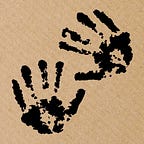The Importance Of Art In Child Development
When most people think of the value of art, they think of the ability to create something through drawing, painting, sculpting or some other medium. That might be the tangible value of the arts, but the real value of art education lies beneath the surface. Art is so much more than a mark on the page; it’s an introduction to culture, a physical manifestation of the mind’s freedom, and means of self-expression that words alone cannot achieve. I enjoy asking everyone who is even remotely interested, what is the importance of art in child development? The answers range from trying to prove there is a place in traditional learning for the arts through “it’s never crossed my mind.” I’ll let you guess which one people use more predominantly.
You may have heard that music is closely linked to math and reading comprehension, but what about the direct effects of art on a child? Research has shown that children who participate in an art-based activity for three hours a day, three days a week are four times more likely to be recognized for academic achievement. On top of that, these children are three times more likely to be elected to class office within their schools and four times more likely to win an award for writing an essay or poem.
Art is often viewed as a luxury or just another extracurricular activity. It is unfortunate that frequently in our society we are forced to justify the external benefits art can provide. But, here we are, school budgets are being slashed, and the reality of things is artistic programs will be cut.
BE PROACTIVE AND CURIOUS
We can firmly state that art aids in the development of motor skills and can be an incredibly useful tool for visual-spatial and kinesthetic learners. The National Institute of Health says that children at the age of three should be encouraged to draw and start using safety scissors as a fundamental way of developing coordination.
Not only is the creation of art essential to a child’s development but so is having the opportunity to view art and form their interpretations of it. Some children are reluctant to express themselves and stay withdrawn from their peers. For these kids, art is an opportunity to gain confidence and engage in group discussions. Art has been shown to give children courage and help them develop individual ideas. Critiques of famous paintings are a great way of promoting group discussions and can alleviate stress especially in children who are still finding the courage to have their art be the center of attention.
Art is a means for children to understand the world and gain better emotional intelligence. A blank page provides a means for children to project and channel their emotions in a constructive way rather than bottling them up. It has been shown that drawing, especially drawing abstractly with symbols and filling in shapes can have a very calming effect on children.
Art, much like Physical Education, is an outlet from the continuity of the school day. Children are often constrained to do things a specific way. Math can only produce one right answer, English they need to prove an argument, history is memorizing dates and facts, but art allows minds to be free to explore. Creative development is often thrown to the sideline in public curriculum.
A misconception is that art is only for people who wish to make it into a career but it’s a highly accessible tool for children of all ages. Art helps to improve/train/refine the right and left sides of the brain. People who draw are more apt at making connections between abstract concepts.
Painting and drawing are safe ways of experimentation. Children experiment with mixing colors, types of brush strokes and paper all the while learning. They’re developing a mindset for complementary subjects and overall, life. Math involves learning processes to achieve a result, in art children learn how to create and recreate their masterpieces. Science requires hypothesis formation and testing similar to experimenting with the artistic tools kids have readily available. Lastly. English requires the articulation of ideas which art critiques and discussions offer experience and depth into opinion forming and assertion.
EMBODY CHANGE
The world is starting to change, and there’s renewed emphasis being placed on creative and emotional intelligence. Marketing, game studios, and publishers need people who have an artistic inclination. The point isn’t that children should make art their career path but that art helps children develop into well-rounded, productive individuals later on in their life. Leveraging art is one of the easiest ways to help a child grow, and its importance needs to stop being overlooked.
Children should be exposed to art often, and early on. I’d like to know, when someone asks you the question “Why is art important in child development,” what will your answer be? Feel free to share that answer with us below.
This blog was originally posted at homespunandhandson.com.
